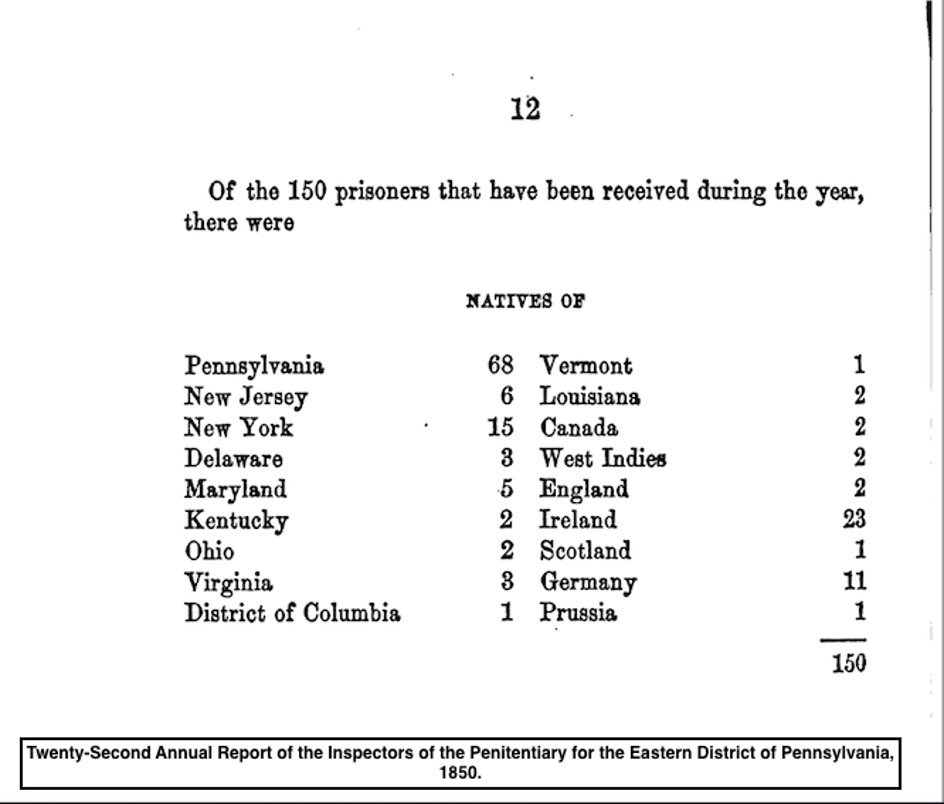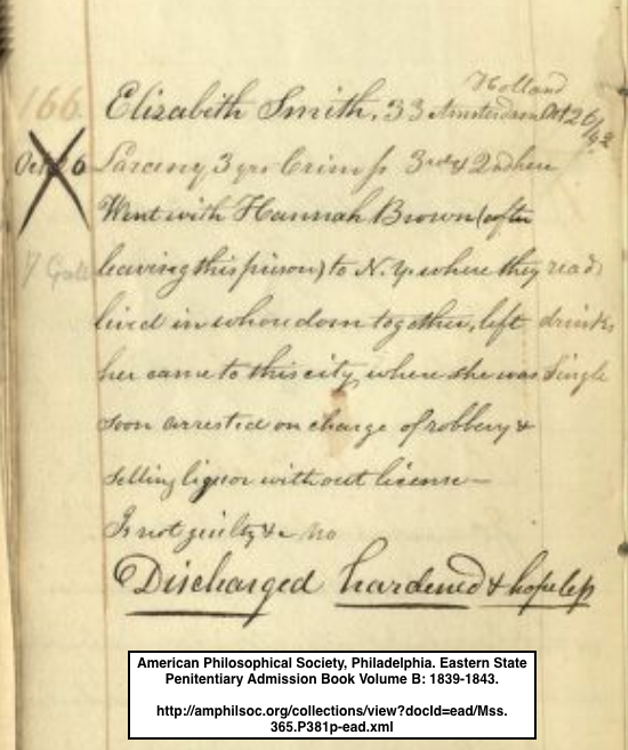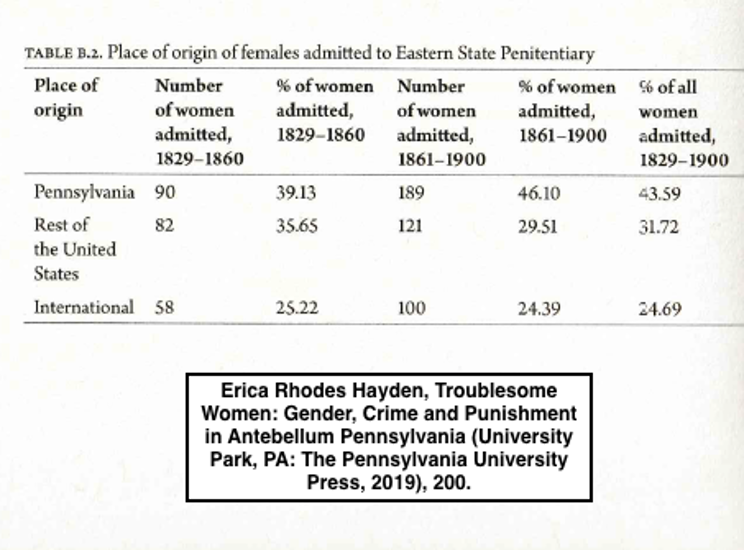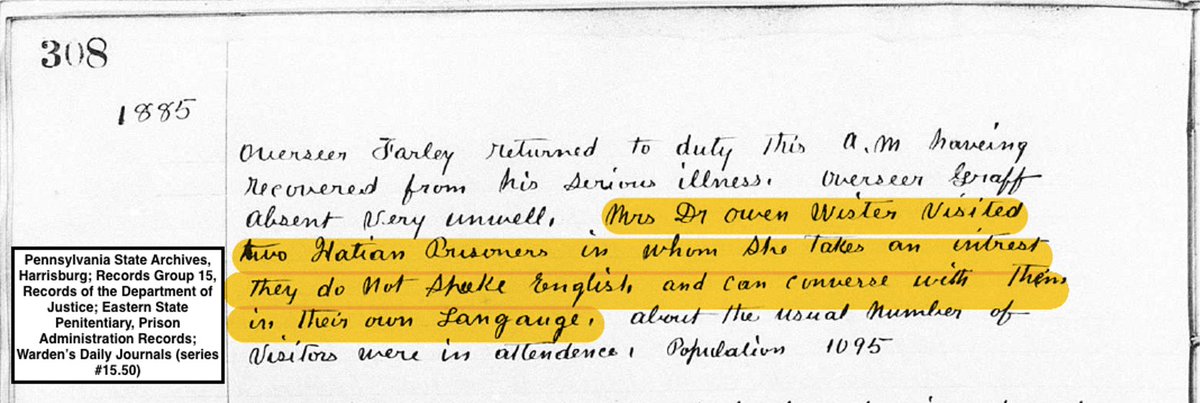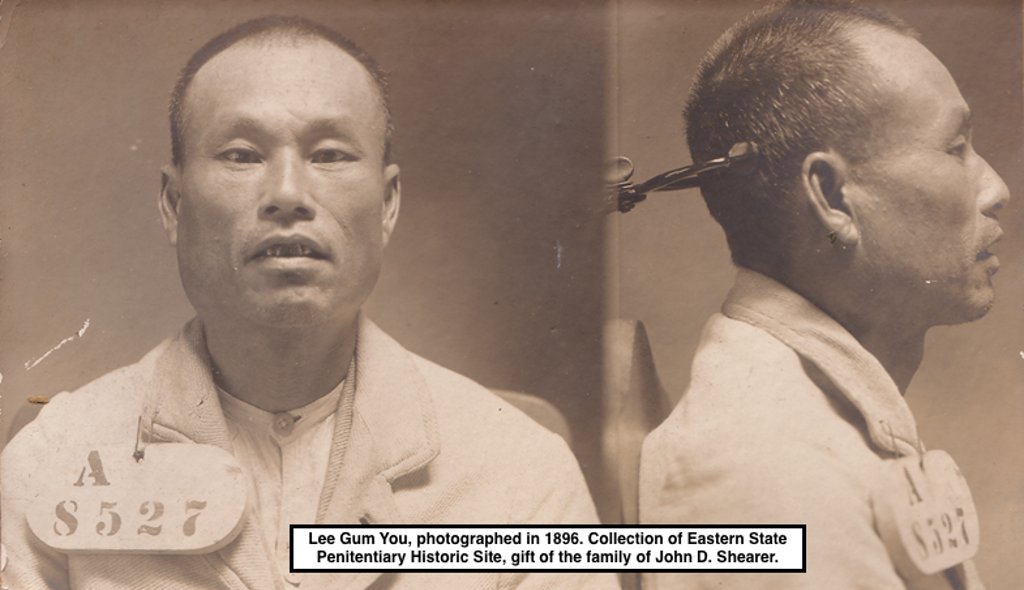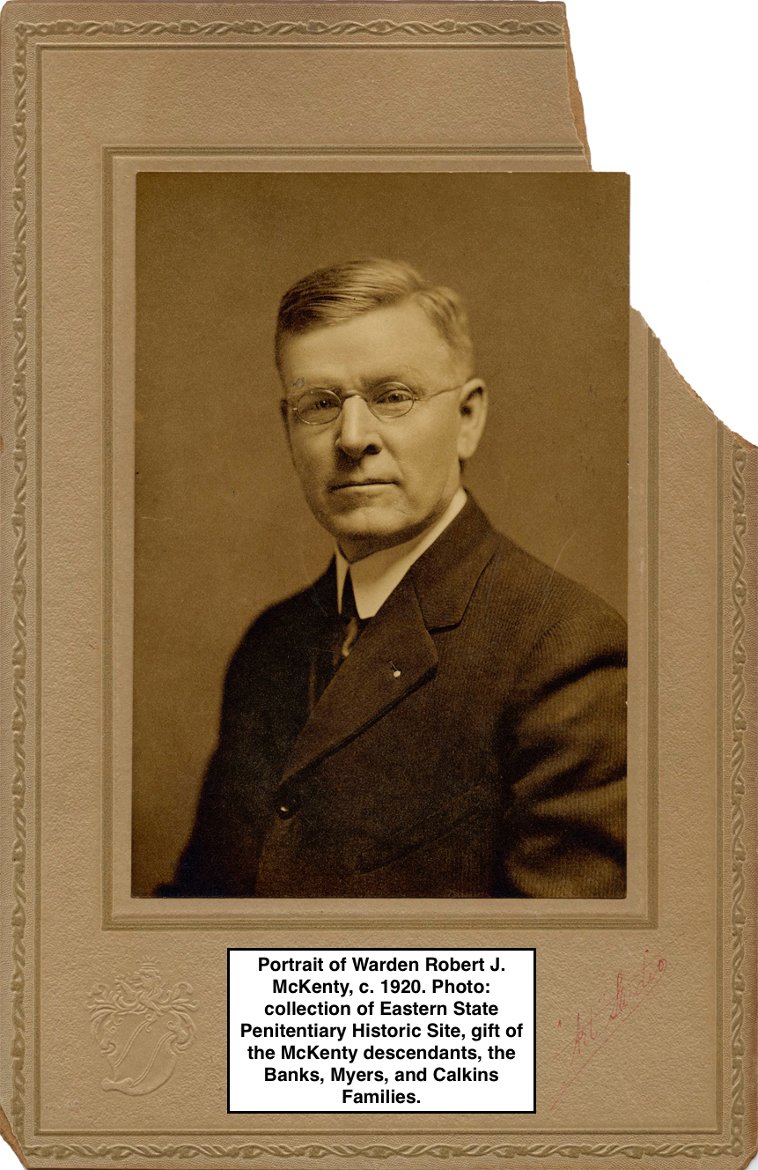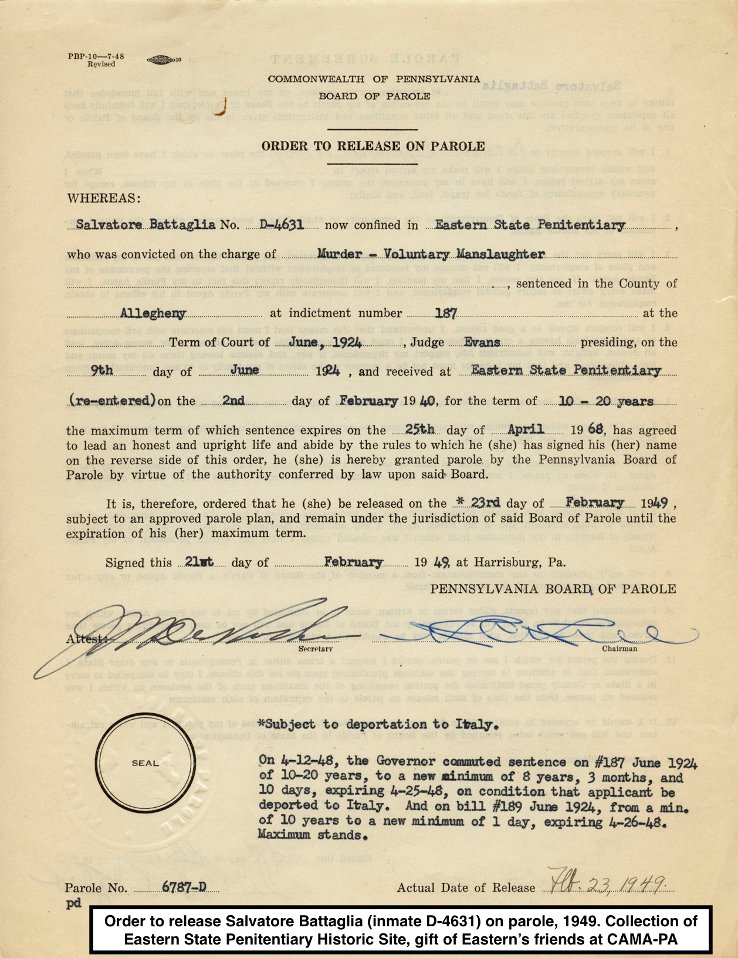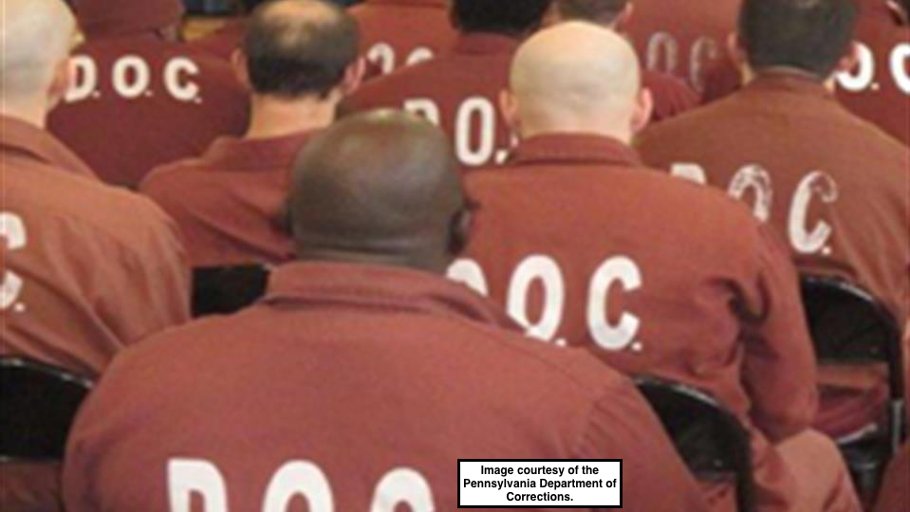1/13 Hi everyone! I’m Damon McCool, Programming Specialist here at Eastern State Penitentiary. I’m taking over ESP’s Twitter to lead you in a discussion about the history of immigrants at the penitentiary. Follow along and tweet your question with the hashtag #HiddenESP.
2/13 Eastern State has a long history of housing immigrants. Part of the prison’s early classification system was documenting a prisoner’s place of birth. This 19th century annual report shows how immigrants were identified alongside native-born prisoners. #HiddenESP
3/13 Prisoner No. 9, Robert Murray, was the first immigrant incarcerated at the penitentiary. A salesman from Armagh, Ireland, he arrived at Eastern State on December 28, 1829 with a year sentence for forgery. #HiddenESP
4/13 The first immigrant woman incarcerated at ESP was Eliza Smith (No. 600 & 1166) from Amsterdam. It was noted upon her arrival that she was a widow, peddler, drank and had tattoos on both arms. Upon her discharge she was described as “hardened and hopeless.” #HiddenESP
5/13 The harsh characterization of Eliza was part of a larger theme of demeaning women that entered ESP. Do you think Eliza’s immigrant status contributed to the criticisms levied against her? Like Eliza, about ¼ of female ESP prisoners from 1829-1900 were immigrants. #HiddenESP
6/13 In April 1885 Dr. Sarah Wister visited two Haitian prisoners. It was noted that these two people did not speak English and Wister was able to communicate with them in their language. What challenges do you think non-English speaking prisoners face, then and now? #HiddenESP
7/13 One of the first historic photos visitors see at Eastern State is of Lee Gum You (A-8527). Before receiving a pardon in 1908, he spent 4 years in the prison’s hospital with an abscess on his back. He was one of nine Chinese immigrant prisoners held at ESP. #HiddenESP
8/13 In 1913 Warden McKenty, with materials donated from the YMCA, introduced foreign language classes at Eastern State. Classes included Greek, Italian and German. Do you think these classes helped prisoners from different countries communicate with each other? #HiddenESP
9/13 Some prisoners faced deportation after their incarceration, like Salvatore “Battleaxe” Battaglia (C-1348 & D-4631). Born in Sicily, Battaglia immigrated to the U.S. in 1920 after both parents and 8 siblings died in a volcano eruption. He arrived at ESP in 1922. #HiddenESP
10/13 Described as an “agitator among the Italian element” Battaglia was an underworld figure accused of murdering a police officer and later a guard at Western State Penitentiary. Records show he was released from ESP in 1949 in order to be deported to Italy. #HiddenESP
11/13 Today, numerous studies have concluded that immigrants are less likely to commit crimes than people born in the U.S. and are incarcerated at a lower rate than their native born peers. Why do you think this is the case? #HiddenESP
12/13 How do you think immigration policy should overlap with criminal justice policy? What are some ways that immigration reform and criminal justice reform can benefit each other? Are there ways they can hurt each other? #HiddenESP

 Read on Twitter
Read on Twitter